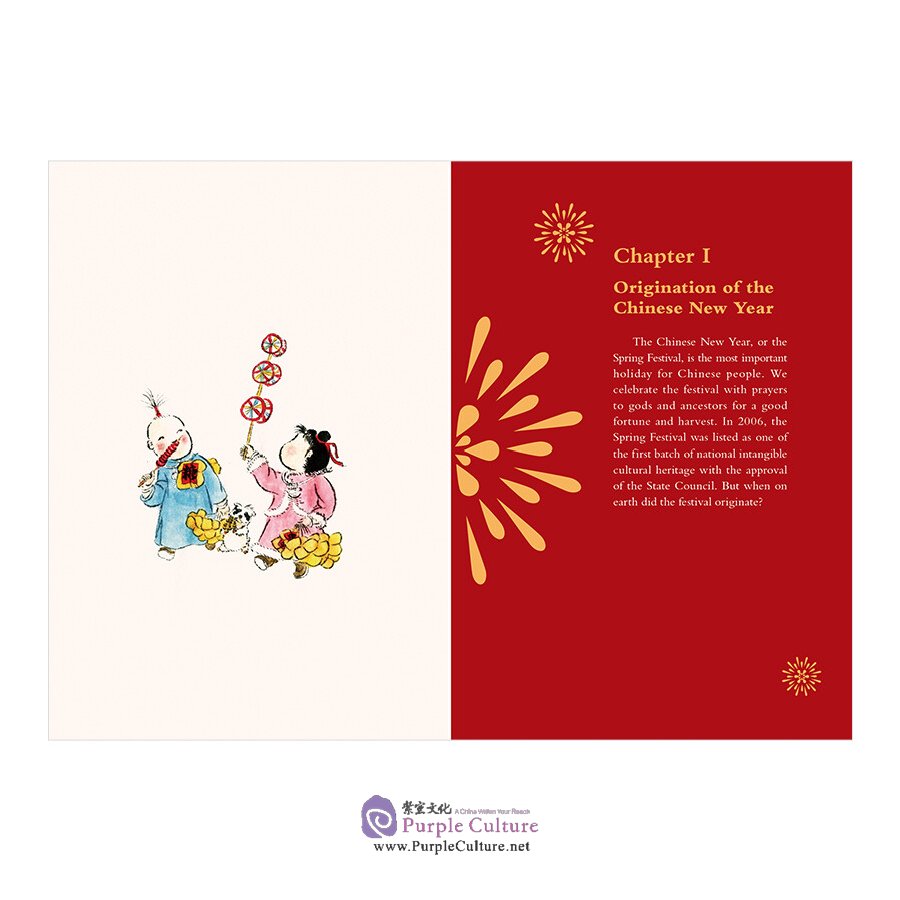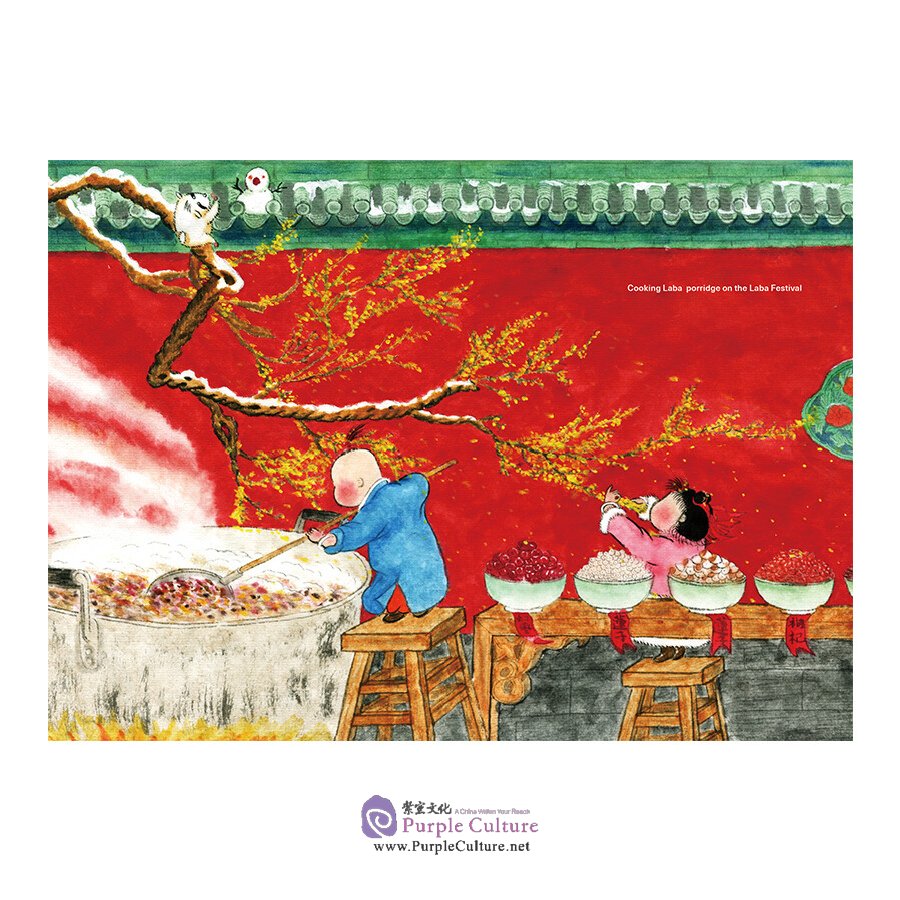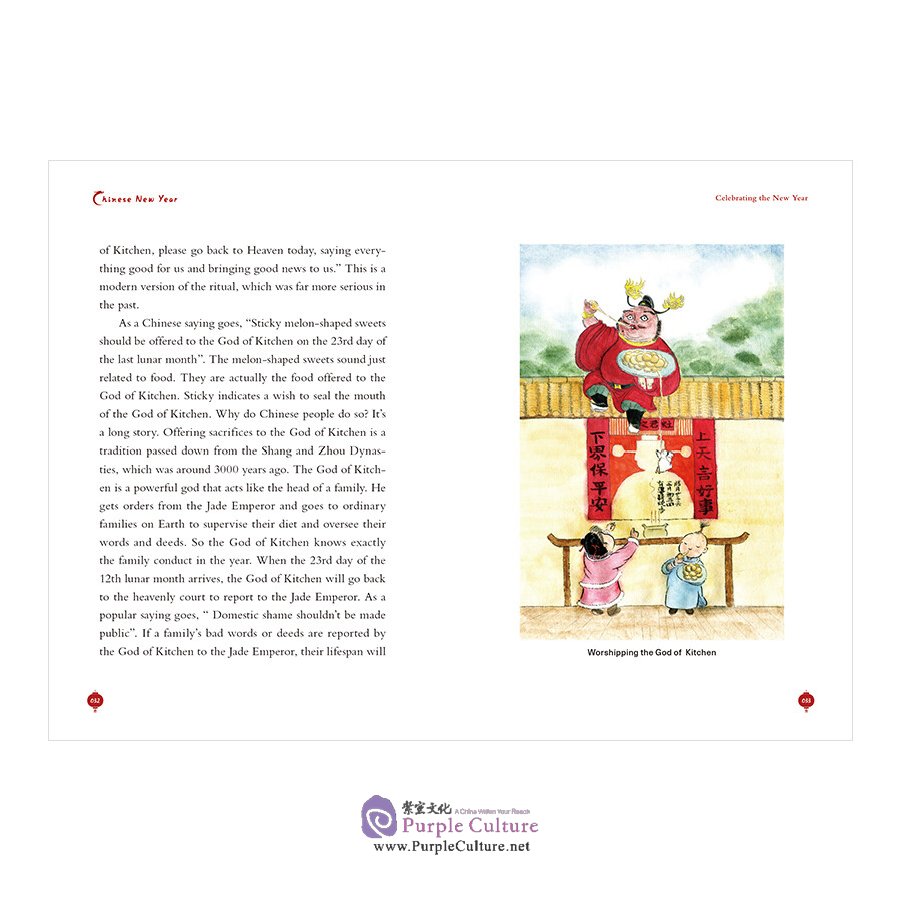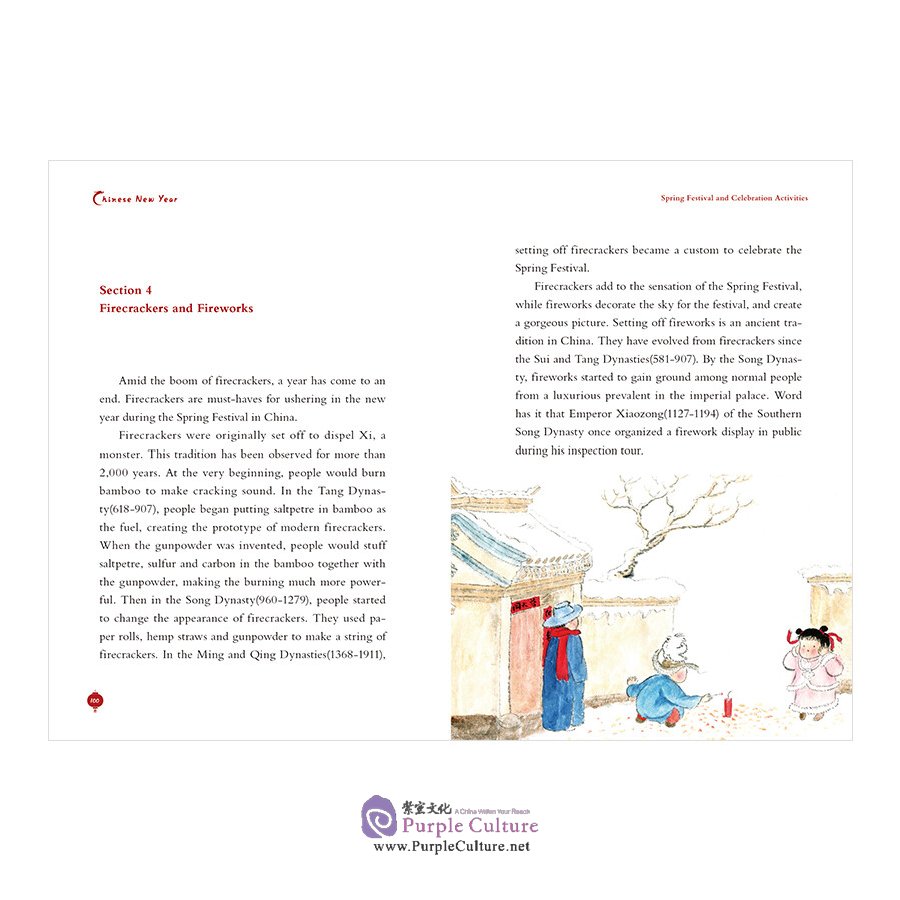Sample Pages Preview



 Preface
Preface
The New Year is Coming
Celebrating the new year is always the top priority of the Chinese people, and other things, however important, will be postponed.
“Amid the boom of firecrackers, a year comes to an end, and the spring wind wafts warm breath to the wine. While the rising sun shines over each and every household, people will replace old peachwood charms with new ones.” Wang Anshi, a poet in the Song Dynasty(960-1279), depicted all the hustle and bustle of the festival in his poem, and highlighted its lasting theme— ringing out the old and ushering in the new. It is the charm of the most important festival among the Chinese people.
Throughout China’s history, what the Spring Festival means for the Chinese people, poor or rich, has always been family reunion. Family is what the Chinese people find hardest to part from. Reserved as they are, they get the opportunity of the Spring Festival to show their love for the family via family reunion. Imbued with the Chinese people’s deepest affection and simplest wishes, the Spring Festival has become the most important traditional festival for thousands of years as well as the most influential holiday across the world.
As an ancient festival with enduring appeal, the Spring Festival has long been celebrated outside China. Asian neighbors or countries that have close ties with China also celebrate the festival with firecrackers and fireworks, dragon and lion dances. They also add their cultural elements to this festival, making it more attractive. In Chinese settlements and China Towns around the world, the festival has always been the most important holiday to show the home- sickness of overseas Chinese.
It is easy for one to associate the Spring Festival, with Christmas in the West, which is also a reunion holiday. In every December, more than 100 countries and regions around the world will become busy for the upcoming Christmas holiday. Then on the night of December 24th, they will celebrate Christmas Eve. At Christmas, the Western people will have a home feast for family reunion and toast each other, which is quite similar to the reunion dinner on New Year’s Eve in China.
The Chinese people will stay up and watch the CCTV New Year’s Gala after the reunion dinner while the Western people will hold parties on Christmas Eve, singing, dancing, hugging and wishing each other around the hearth. Celebrations of Christmas Eve will culminate with the bell ringing, while the same is true of New Year's Eve in China, when the bell rings and fireworks and firecrackers are set off.
In China, the northerners often eat dumplings (Jiaozi) while the southerners, glue puddings (Tangyuan) to celebrate the new year. Both of them are symbols of auspice, reunion, good luck and happiness. As for Christmas in the West, Turkey is a must-have, as the Western people consider it a token of good luck in the coming year.
The Spring Festival is the favorite holiday among Chinese children as they can get red packets from the elder, while Western children also look forward to Christmas as they believe Santa Claus will climb in through the chimney and bring them unexpected gifts.
The Spring Festival and Christmas share the same theme: family reunion and hope for the future. By celebrating the festival, people across the world all wish for happiness, reunion and peace.
Passed down for thousands of years, the Spring Festival in China and Christmas in the West both represent the continuation of those good wishes and affection and the inheritance of culture and belief.



